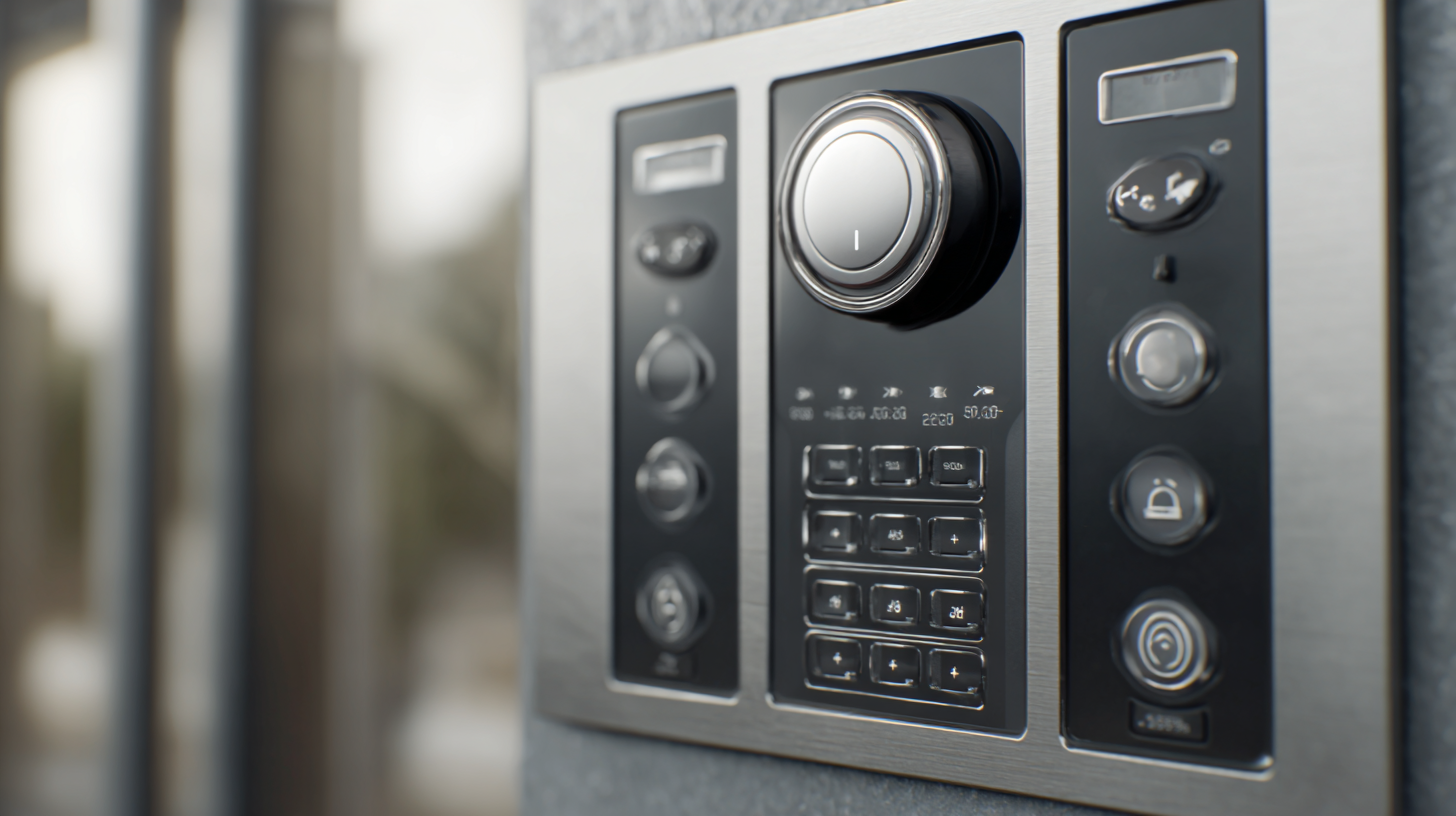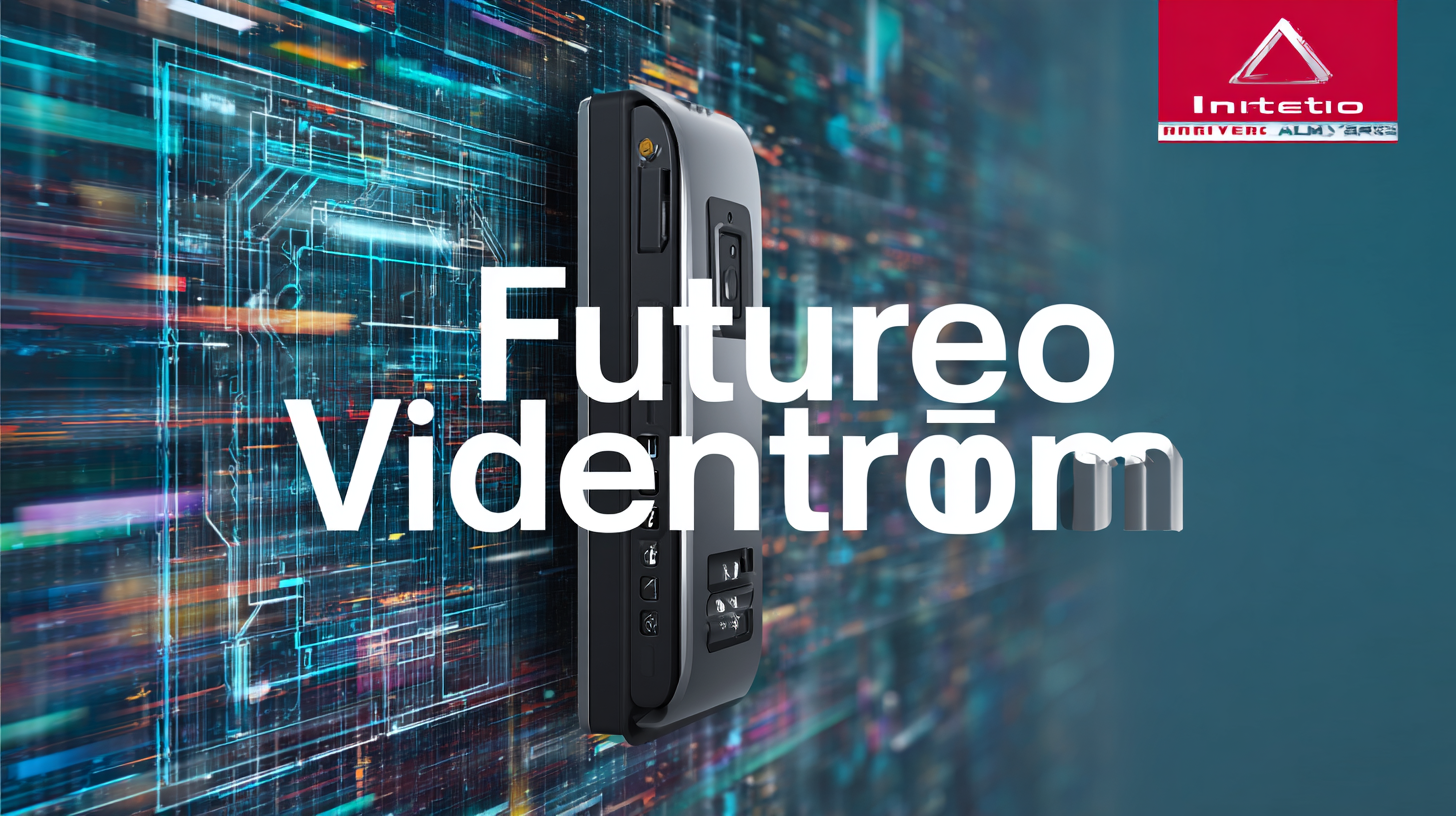As we move towards 2025, the landscape of communication technology is evolving rapidly, with Audio Video Intercom systems at the forefront of this transformation. According to a recent market research report by Grand View Research, the global video intercom systems market is projected to reach USD 3.1 billion by 2025, growing at a CAGR of 10.1% from 2019 to 2025. This surge is driven by increasing demands for enhanced security and convenience in residential and commercial properties. The integration of advanced technologies such as AI and IoT into Audio Video Intercom solutions is set to revolutionize user experience, making communication more seamless and effective. In this blog, we will explore the latest trends in Audio Video Intercom technology and provide strategic insights for businesses and homeowners to leverage these advancements effectively.

 The future of audio and video intercom technology is shaping communication landscapes as we approach 2025. With advancements in smart home devices, the integration of audio video intercoms is becoming increasingly important, particularly for enhancing safety and convenience in aging in place. A recent study indicates that over 80% of seniors prefer to age at home, highlighting the demand for reliable communication systems that provide security and connectivity for both the elderly and their caregivers.
The future of audio and video intercom technology is shaping communication landscapes as we approach 2025. With advancements in smart home devices, the integration of audio video intercoms is becoming increasingly important, particularly for enhancing safety and convenience in aging in place. A recent study indicates that over 80% of seniors prefer to age at home, highlighting the demand for reliable communication systems that provide security and connectivity for both the elderly and their caregivers.
To optimize the use of audio video intercom technologies, consider implementing smart doorbell cameras as part of your security strategy. These devices not only allow homeowners to screen visitors and deliveries but also provide peace of mind through real-time video feeds directly to mobile devices. Additionally, utilizing technologies that support open-source protocols, like the Matter standard, can streamline the setup of interconnected smart devices, ensuring compatibility and ease of use.
As we move towards 2025, investing in advanced video monitoring solutions backed by artificial intelligence will be key. Reports suggest that the global video surveillance industry is rapidly adapting AI capabilities, enhancing features such as facial recognition and activity alerts. To stay ahead, businesses and homeowners alike should prioritize systems that evolve with technological advancements, ensuring greater security and seamless communication in their environments.
As we look toward the future of communication, the development of next-generation intercom systems promises to revolutionize our daily interactions. When selecting an advanced audio-video intercom, key features should be at the forefront of your decision-making process. High-definition video quality, seamless connectivity with smartphones, and robust security features are essential elements that enhance user experience and safety.
One critical tip is to prioritize intercom systems that offer two-way communication with noise cancellation technology. This ensures clear audio and video transmission, allowing users to communicate effectively without distractions. Additionally, look for systems that incorporate integration with smart home devices, making it easier to manage your security and communications from a single platform.
Another valuable feature to consider is cloud storage for video footage. This not only provides peace of mind by securing your data but also facilitates access to recordings from anywhere in the world. When evaluating intercom options, it’s beneficial to choose systems that support easy upgrades and future-proof capabilities, ensuring that your investment remains relevant as technology evolves.
The integration of intercom solutions in smart homes is becoming increasingly essential as technology continues to advance. The global wireless intercom market is expected to expand significantly, reaching approximately $12.58 billion by 2032. This growth underscores the importance of smart intercom systems, which not only enhance security but also improve communication within modern households. As we approach 2025, effective strategies for incorporating these solutions into smart homes will be pivotal for homeowners looking to optimize their living environments.
One effective approach is to ensure that intercom systems are compatible with existing smart home devices. By integrating intercom solutions with security cameras, smart locks, and home automation systems, homeowners can create a seamless and user-friendly experience. Additionally, the rise of video intercom devices—predicted to grow from $2.70 billion in 2025 to $5.79 billion by 2034—highlights the shift toward more visual communication. Implementing intercom systems that offer video capabilities will enable residents to visually identify visitors and communicate more effectively, enhancing both safety and convenience in smart living spaces.
This chart illustrates the projected adoption rates of key trends in audio video intercom technology by 2025. The analysis indicates that user interface design and smart home integration are expected to lead the adoption rates.
The role of AI and IoT in enhancing intercom user experience is increasingly becoming pivotal as we approach 2025. According to recent reports, the global IoT market is expected to reach a staggering $1.1 trillion by 2026, with significant growth driven by applications in hardware, platforms, and services. In particular, the integration of AI within intercom systems is revolutionizing how users interact with smart environments, offering features like facial recognition and voice command functionalities that improve security and convenience.

On the other hand, the rise of 5G technology is further facilitating the development of interconnected systems, enabling seamless communication and data transfer. This is essential for the robust performance of IoT devices, which rely on low latency and high bandwidth. A study indicated that 5G could potentially add $12 trillion to the global economy by 2035, underscoring its transformative impact on various industries, including retail, where customer experience optimization is paramount.
Through collaborative efforts between technology leaders, the vision of a fully integrated IoT ecosystem for intercom systems becomes increasingly achievable, fostering a user-centric approach that enhances daily interactions through intelligent and responsive technology.
As we look towards 2025, future-proofing your communication systems will be essential to stay ahead in a rapidly evolving technological landscape. One significant trend to anticipate is the integration of AI in audio and video intercom technologies. AI can enhance user experience by enabling smarter call routing, facial recognition, and real-time language translation. These advancements will not only streamline communication but also make interactions more efficient and accessible.
Tip: Invest in scalable solutions that allow easy upgrades as technology evolves. This strategic move will help you incorporate new features without needing a complete overhaul of your systems.
Another trend to watch is the rise of seamless connectivity. With the Internet of Things (IoT) at the forefront, intercom systems that work harmoniously with other devices will become commonplace. This interconnectedness not only simplifies operations but also enhances security through synchronized monitoring and control.
Tip: Prioritize systems that offer robust security features, such as end-to-end encryption and two-factor authentication, to safeguard your communications against potential threats.
